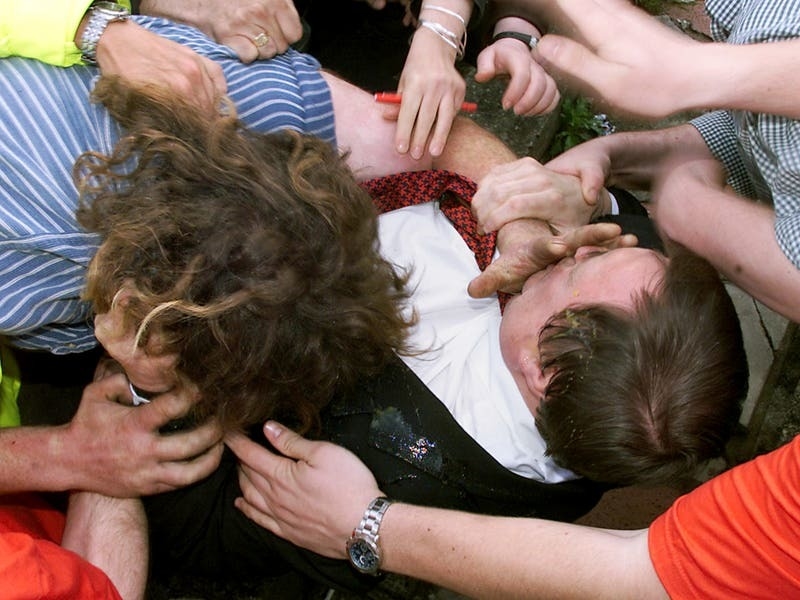POTTERY thought to have been deliberately buried during the Bronze Age has been found in fields earmarked for the new hospital.
The find was made by Pre-Construct Archaeology, a company commissioned to examine the development site before any building or groundwork begins.
Staff working for the firm were inspecting trenches dug in field H1550 – opposite the Crematorium – last year when the discovery was made.
As part of a report, compiled following the operation by PCA and submitted as part of the planning application for the hospital project, it was also revealed that pieces of metal, thought to have come from parts of old tools from the same era, had been found as well.
Describing the treatment of the pottery, the report says: ‘Due to the fragile state of the vessel, it was lifted and wrapped with its surrounding sand deposit to preserve its structure. It was then excavated back in the office by Neil Mahrer, conservator at Jersey Heritage.
‘During controlled excavation of the interior fill, two scraps of copper alloy metalwork were recovered from within the semi-complete prehistoric vessel. One of these items, a hollow hexagonal tube measuring approximately 15mm in length, was recovered at a depth of approximately 50mm below the top of the soil surface. This piece would appear to have been cast and may derive from an implement such as a socketed axe or small socketed hammer.
‘The second item, which appears to be a flat, irregularly shaped piece of plate scrap, measures approximately 31mm across at the widest point and has a rectangular cross-section. This item, which was recovered from near the base of the vessel cannot be further identified.’
In addition to the metal pieces, a decorated rim sherd – a fragment from the top of a pot – was also found.
The report adds: ‘If that is the case, then most of the rim appears to be missing, which could have fragmented due to post-deposition circumstances. It may also be the case that the decorated rim derives from a different vessel and was placed inside the semi-complete pot.
‘In terms of date, the type of decoration employed on the Jersey sherd commonly occurs on middle and middle-late Bronze Age pottery and also, although less commonly, on post Deverel-Rimbury late Bronze Age pottery.
‘The fabric appears to be quite fine and the thinness of the vessel walls – approximately 6mm in places – could suggest a date range of around 1200-900 BC. [The pottery] is believed to be of Bronze Age Deverel Rimbury fabric and appears to be have been placed in a purposely dug pit.’
PCA have recommended that further work is carried out before construction of the hospital begins.
‘This might lead to further stages of archaeological investigation in that area depending on the results. It is also suggested that an archaeological watching brief [is carried out] on the rest of the area,’ the report says.






